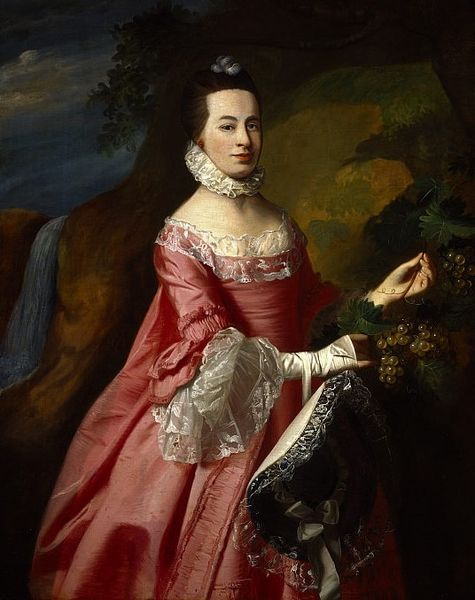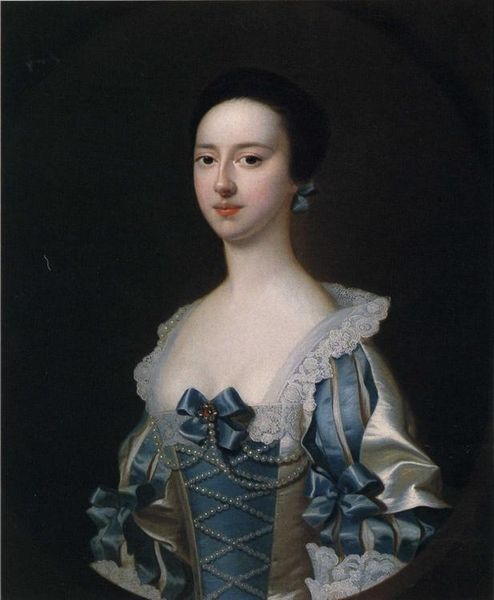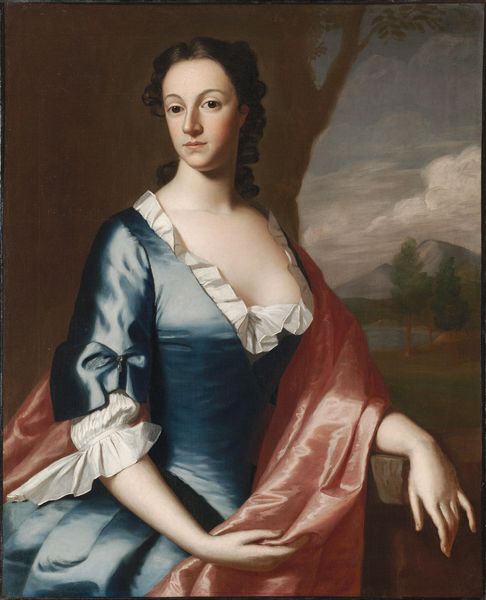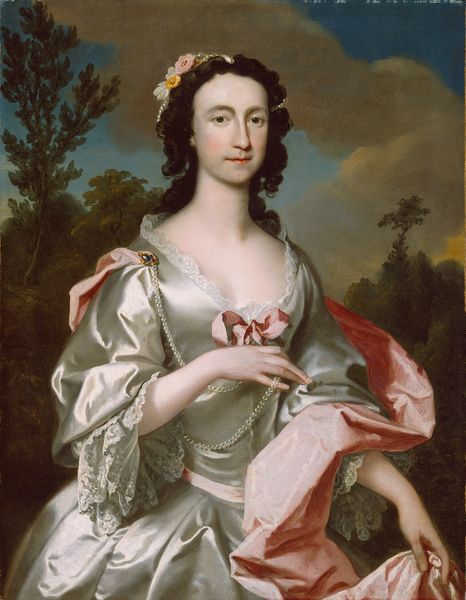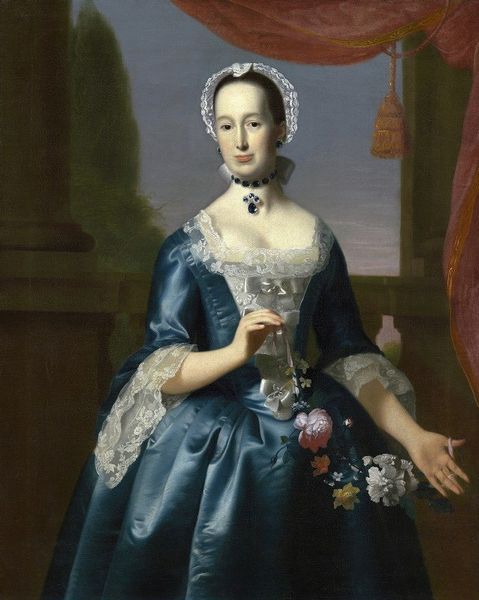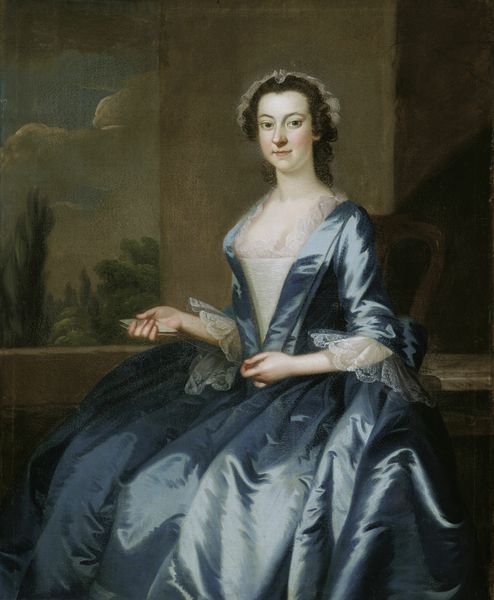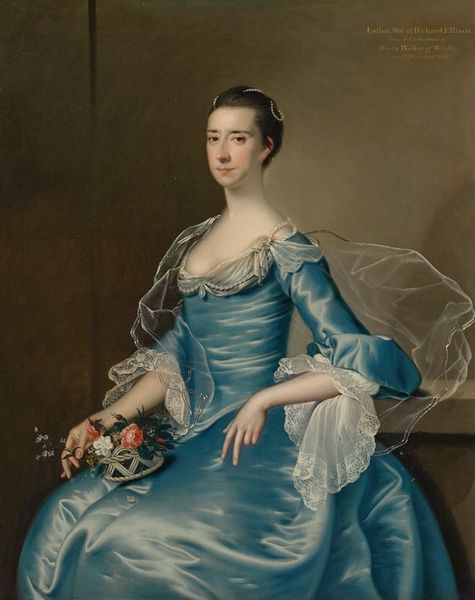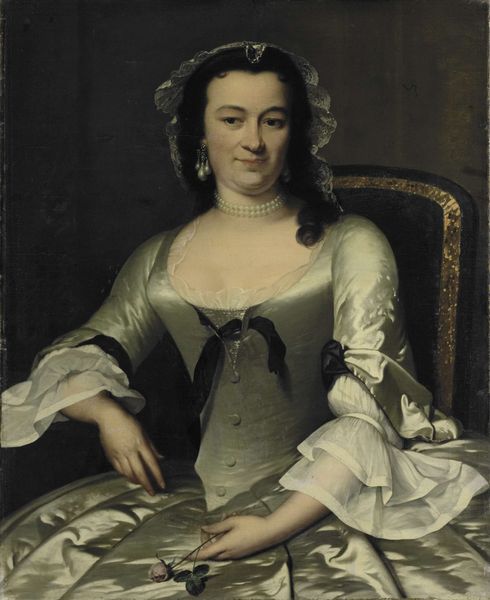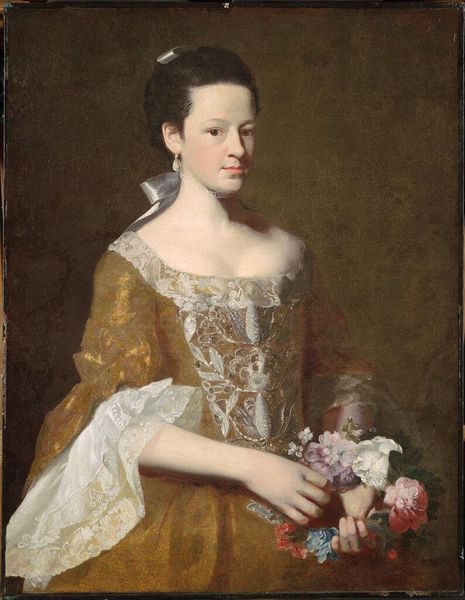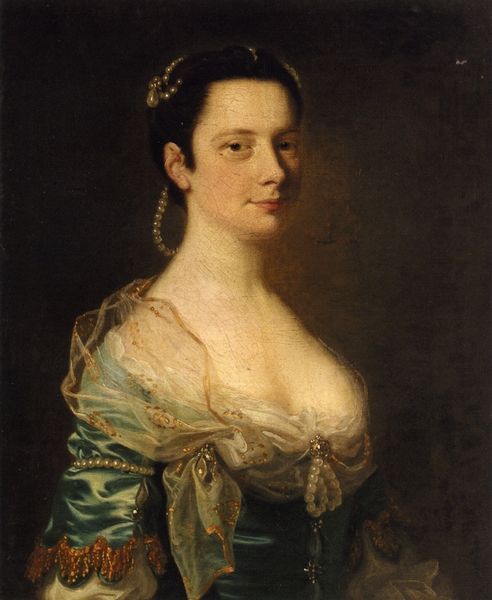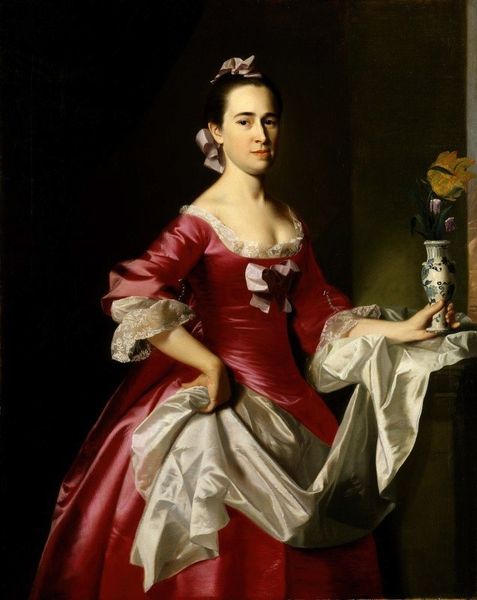
painting, oil-paint
#
portrait
#
figurative
#
baroque
#
painting
#
oil-paint
#
genre-painting
#
academic-art
Copyright: Public Domain: Artvee
Curator: Welcome. We’re standing before John Singleton Copley’s “Eunice Dennie Burr,” painted between 1758 and 1760. Editor: Immediately, I notice a contrast. The subject has a direct, almost challenging gaze, yet the composition—the flowing lines of the dress, the soft colors—creates a sense of restrained opulence. There's a push and pull between assertion and constraint that piques my interest. Curator: Copley, of course, was working in a very specific market in colonial Boston. Portraits were status symbols, demonstrations of wealth and social standing. Look closely at the dress, the lace, even the inclusion of the parrot—these were all commodities. We can almost trace trade routes and access to materials through them. Editor: Precisely! That dress, its very construction and material, speaks volumes about the transatlantic flow of goods, labor, and the construction of female identity in the colonies. Who were the laborers producing those fabrics and that intricate lace trim? It begs questions about social stratification and colonial economies built on exploitation. Curator: The technical skill is also notable. Copley’s talent for rendering fabrics –the satin sheen, the intricate lace—really captivated his patrons. He was limited by the available pigments of course; we often consider how artists overcame such material constraints. Editor: But isn't there a tension there? This technical mastery, this opulent display, occurs against the backdrop of colonial unrest and burgeoning revolutionary sentiments. Her controlled pose might be seen as a reflection of the limited agency afforded to women of her class, positioned to maintain social stability even in politically turbulent times. How did the elite women navigate these competing pressures? Curator: And to that point—portraits like these helped solidify class structures. The meticulous details showcased wealth but also dictated societal expectations and visual decorum. The parrot too speaks to those power structures; who possessed it, who cleaned it? The means of producing such art involves many hands. Editor: Indeed. Reflecting on "Eunice Dennie Burr," I'm struck by how much this image reveals about colonial hierarchies, consumerism, and the performance of gender and class through material culture. Curator: Absolutely. By examining the context, materiality and display, Copley's "Eunice Dennie Burr" becomes far more than just a beautiful portrait; it becomes a layered window onto a complex past.
Comments
No comments
Be the first to comment and join the conversation on the ultimate creative platform.
